Neuroscience is a much loved by students. But, many don’t know it’s a broad field that one can’t exhaust. Although everything here deals with the neurons in our bodies, it has several sub-branches. One of the famous department of neuroscience is the neurology. It deals with diagnosing and treating all types of nerve disorders. Since its a serious course, you need to be equipped with right books with a simple but profound explanation to get the concept well without struggling.
Buying neurology books is now simple primarily due to the online textbook stores. They are easy in essence you don’t have to struggle to hop from one store to another. But, on the other hand, selection poses a challenge to many users especially the newbies. Of course, you don’t want to buy a book only to find it has a lot of fluff that will complicate your treading. Here, we are dedicated to ensuring you get ideal books for your study level without hassles.
Even when you aren’t an expert in buying these books, having enough information lets you enjoy a smooth selection. You need to know whether it’s a long-term book or for helping you in revision time. Also, determining the edition you want is essential. Some books are old but have valuable information in simple explanation language. New versions are also perfect since they have ore researched and latest information while the author also matters when it comes to content elaboration. To learn your course smoothly, here ate top 10 best neurology books in 2021.
Contents
- List of Best Neurology Books
- 10. McGraw-Hill Specialty Neurology Board Review by Nizar Souayah
- 9. Adams and Victor’s- Principles of Neurology,11th Edition
- 8. The Hospital Neurology Book by Arash Salardini
- 7. Oxford Handbook of Neurology
- 6. Bradley’s Neurology 2 Volume Set in Clinical Practice
- 5. Neuroscience: Exploring the Brain Fourth, North American Edition
- 4. Neuroanatomy Through Clinical Cases 2nd- Edition by Hal Blumenfeld
- 3. Neurology: The Amazing Central Nervous System
- 2. Lange Clinical Neurology and Neuroanatomy: A Localization-Based Approach
- 1. Quick Reference Neuroscience for Rehabilitation Professionals
List of Best Neurology Books
| # | Preview | Product | Price | |
|---|---|---|---|---|
| 1 |

|
Neurology: A Queen Square Textbook | $236.00 | Buy on Amazon |
| 2 |

|
The Only Neurology Book You'll Ever Need |
$64.99
$61.74 |
Buy on Amazon |
| 3 |

|
Adams and Victor's Principles of... |
$199.00
$164.93 |
Buy on Amazon |
| 4 |

|
Bradley and Daroff's Neurology in... | $525.99 $419.61 | Buy on Amazon |
| 5 |

|
Handbook of the Cerebellum and... |
$549.99 |
Buy on Amazon |
| 6 |

|
Clinical Neurology and Neuroanatomy: A... |
$55.00
$41.22 |
Buy on Amazon |
| 7 |

|
Kaufman's Clinical Neurology for... |
$157.99
$94.99 |
Buy on Amazon |
| 8 |

|
Handbook of the Cerebellum and... | $1,099.99 $1,025.00 | Buy on Amazon |
| 9 |

|
Epilepsy: A Comprehensive Textbook |
$649.99 |
Buy on Amazon |
| 10 |

|
Practical Neurology |
$138.99
$116.19 |
Buy on Amazon |
10. McGraw-Hill Specialty Neurology Board Review by Nizar Souayah
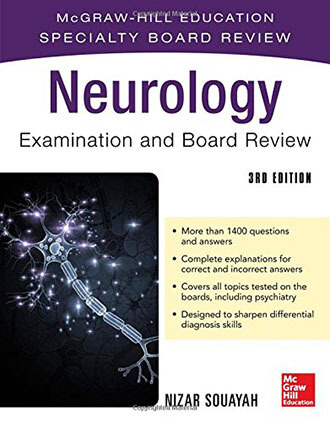
Are you looking for the best way to prepare for the neurology certification? Well, these exams are administered by the American Board of psychiatry and neurology. So this book by Nizar Souayah has every bit of information you would need to ensure total success. The book offers a compilation of questions, answers, and thorough explanations. It is fun and enjoyable to read as it uses colorful illustrations and presentations which simulate what you will encounter in the real exams.
This neurology book covers more than 1200 questions and answers with comprehensive explanations of each. It shows both correct and incorrect answers for each question covered. So, it will help you remember the important details on diagnostics testing as well as neurological testing.
9. Adams and Victor’s- Principles of Neurology,11th Edition
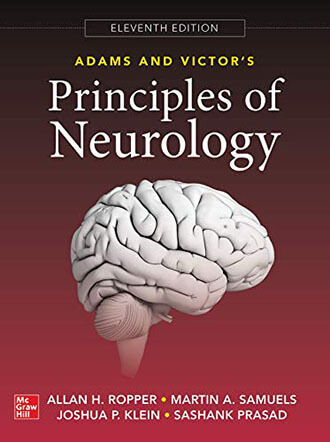
If you want to become a prominent neurologist, there is no better way than to read this book written by Dr. Ropper. He and other renowned authors have compiled every detail you need to know in testing and diagnostics in neurology. It also covers the comprehensive topics, questions, and answers you need before certification.
Well, Dr. Ropper is a renowned neurology professor at Harvard. He is also the vice-chair of the neurology at Brigham and Women’s Hospital in Boston. He is also credited as being among the founders of neurology intensive care. As well, you need to know him as an editor of the New England journal of medicine. Besides, he has served on numerous medical journals editorial boards. Amazingly, this author has over 180 professional publications in neurology.
8. The Hospital Neurology Book by Arash Salardini
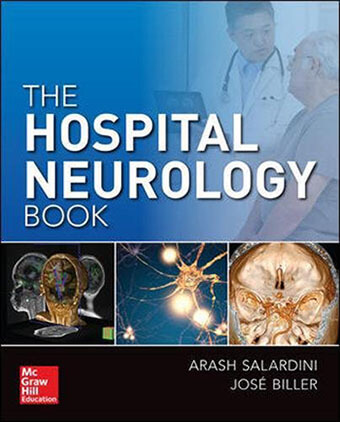
The practice of neurology seems hard for many medical students. This book by Arash will make everyone love the topic. It is practical and protocol orientated to j help the students get well versed with the medical field comfortably. It is a practical and pedagogical resource on neurology. It presents a useful guide for a general neurologist and Neuro-hospitalists in the proper care of neurology patients.
It is easy to read as it boasts organized common presentations that hospital neurologists would encounter daily. The book also utilizes a case-based approach to help the neurologist with optimal assimilation of useful information. Moreover, each chapter is self-contained, and you can access information in any order you like.
7. Oxford Handbook of Neurology
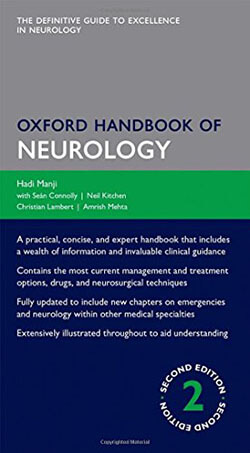
Neurology is a complex topic of discussion. To understand it fully or rather better, you need to have the best neurology book. This oxford handbook is a classic option to consider. It is a fully-revised guide for those in neurology and neurosurgery. It provides a practical and precise reference resource which sums up a wealth of information and clinical guidelines in this complex specialty. It includes more cutting edge treatment and management options, drugs, and modern techniques. Full of vibrant illustrations, this book enhances ease of reference and important clinical advice. Moreover, it includes general presentations and disorders and tips on neurological assessment.
6. Bradley’s Neurology 2 Volume Set in Clinical Practice

Here is a neurology book that presents rich information regarding every aspect of neurological disorders and treatment. It boasts an authoritative updated guideline from several professional authors. With more than 150 expert contributors, this is a book that equips you with comprehensive management of neurological disorders.
This book will also sow true to life view of how neurological diseases manifest through vibrant videos. Among these illustrations, the book covers seizures, EEG, sleep disorders, brain stimulation, and other related stuff concerning neurology. It covers important modern techniques. These include; brain perfusion techniques and the relationship between cerebral vascular disease and neurodegenerative disease.
5. Neuroscience: Exploring the Brain Fourth, North American Edition
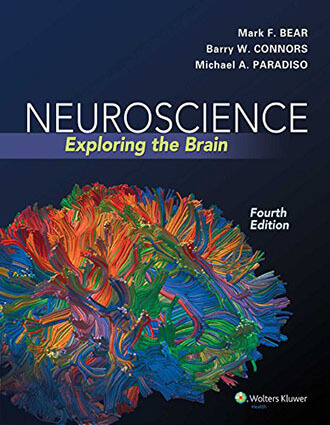
Unlike other neuroscience books, this one is more pleasurable to read. This book is carefully written with simple and colorful illustrations to lure students into reading more. Most of the other neurology books are boring and often confusing to read. It also contains more in-depth information than other textbooks. You will also love the enhanced writing by which the author’s term as special interests boxes.
These are special features which are designed to illuminate the relevance of each piece of information covered in the book. To make the book more interesting, it offers interesting histories of how the discoveries came into being. As well, it boasts a path of discovery boxes and brain food boxes. These will help the neurology students understand the course in a better and enriched way.
4. Neuroanatomy Through Clinical Cases 2nd- Edition by Hal Blumenfeld
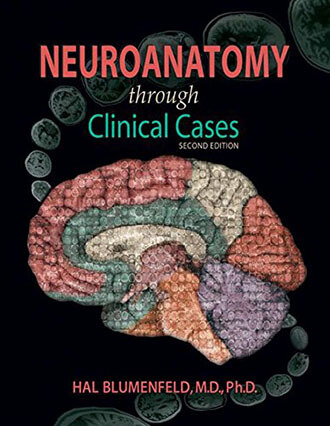
One of the best ways to master neurology is through an interactive approach. Well, the author of the Neuroanatomy book uses brilliant and interesting illustrations to capture the reader’s mind. Through this interactive approach, neurology students can have a better understanding of the course without going through painful reading. This approach is friendly to both teachers and students.
It covers clinical cases to bring a pioneering interactive approach to leave every reader contented. Through this amazing approach, students tend to appreciate clinical relevance. Well, they get to understand the structural details and integrate functional systems knowledge. To hint a bit, the book says that a single lesion may affect several neuropathways and structures.
3. Neurology: The Amazing Central Nervous System
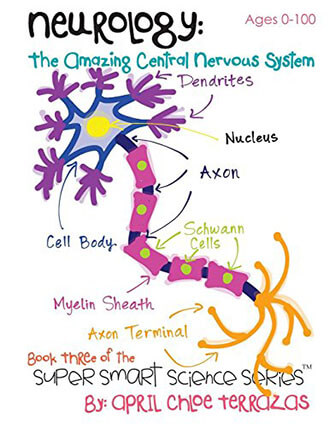
Still, this is a book neurology students will cherish as they go through daily hassles of mastering this important medical course. April Chloe Terrazas writes one of the best neurology books. The book captures important information in bold images and color-coded text to keep the reader fully engaged. It is fun to read a book that allows you to learn new vocabularies and help unleash your inner neurologist.
The author received her bachelor in science from the University of Texas. Since then she has been publishing super smart science series that are fun for all ages. She vividly explains the anatomy of the nervous system and functioning of each major and basic unit. Well, she does this through interactive and fascinating illustrations to make every reader happy.
2. Lange Clinical Neurology and Neuroanatomy: A Localization-Based Approach
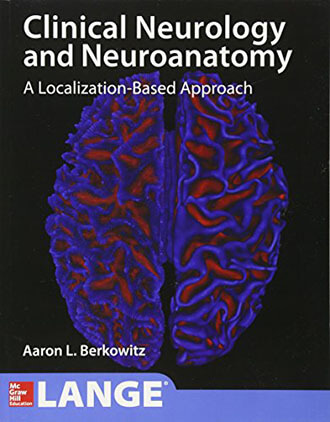
The author uses a Localization-Based Approach to help neurology students digest skills with ease. The book offers a clear and concise approach to explain the sophisticated relationship between the neuroanatomical structure versus the function. Also, the author introduces the various disorders related to neuro-anatomy. With several color illustrations and high CT and MRI scans, this book helps to put the theory into practice without any struggles.
It also makes use of the explanatory table outlines to explain clinical features, characteristics, and different diagnostic procedures. The relevant neuro-anatomy is offered on a clinical basis. So, it provides neurologic localization as well as a differential diagnosis. The second part of the book captures the clinical features, diagnosis, and management.
1. Quick Reference Neuroscience for Rehabilitation Professionals

Are you a neurology student looking for the best neuroscience book? Students in the rehabilitation profession can now perceive neuroscience as one of the easiest courses. Well, this book is written by an expert and has all the information a rehab professional may need. It offers complex information in a quick and easy to understand format. The text features a bulleted and straightforward format. So, it summarizes a complex idea into short, engaging, and easy to remember format. Besides, the colorful illustrations of this book make it easy for abstract neurologic concepts to be understood.
Each section discusses clinical correlates concerning common neurological conditions. Moreover, the glossary captures clinical terms, which are important in ensuring an easy understanding of the contents of the book. However, the author is occupational therapists, and hence, the book focuses on important neuroscience concepts. These are the neurology concepts that are vital in the rehabilitation profession.